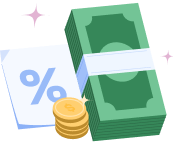Table of Contents
For decades, your credit score—a number calculated from your borrowing and repayment history—has been the gatekeeper to loans, mortgages, and even jobs. But what if that number only tells part of your story? In 2025, as more people freelance, gig, or move between countries, millions find themselves “credit invisible” or unfairly judged by outdated systems. Enter open banking: a technology-driven movement that lets you securely share real-time financial data with lenders, unlocking a fuller, fairer picture of your financial health.
As open banking adoption hits record highs and regulatory changes sweep the globe, many ask: Is open banking the future of creditworthiness assessment? Let’s explore how this revolution is changing lending—and what it means for you.
Understanding Open Banking
What Is Open Banking?
Open banking is a system where consumers, not banks, control their financial data. By giving secure, permissioned access to your bank accounts, transaction history, income, and more through APIs (application programming interfaces), you can allow third-party providers—like lenders or budgeting apps—to see your real financial life. Unlike traditional banking, where your data is siloed within one institution, open banking puts you in the driver’s seat, letting you decide who sees what and when.
How Open Banking Works
When you apply for a loan using open banking, you might be asked to connect your bank account via a secure link. With your consent, the lender can instantly view:
- Account balances and types
- Real-time transaction history
- Income streams and regular expenses
- Spending patterns and savings habits
This data is far richer and more current than what’s found in a standard credit report, offering a 360-degree view of your financial health.
Read related blog: Black-Owned Credit Unions: Your Guide to Inclusive Banking
Traditional Creditworthiness Assessment: The Status Quo
How Credit Scores Are Calculated
Most lenders still rely on traditional credit scores—FICO and VantageScore being the most common. These scores are built from data collected by credit bureaus, focusing on:
- Payment history (on-time or late)
- Credit utilization (how much of your available credit you use)
- Length of credit history
- Types of credit accounts
- Recent credit inquiries
While these models work for people with established credit, they often exclude millions who don’t fit the mold—students, immigrants, freelancers, or anyone who avoids credit cards.
Limitations of Traditional Credit Scoring
- Thin or No Credit Files: Millions of people have “thin” files—too little history to generate a score, or none.
- Lagging Data: Credit reports update slowly, missing sudden income changes, new jobs, or financial shocks.
- Incomplete Picture: Traditional scores ignore alternative data like rent, utilities, or gig income, missing key signs of financial responsibility.
- Financial Exclusion: Many are denied fair access to credit simply because the system can’t “see” their whole story.
Read related blog: What is a Good Credit Score: Understanding Creditworthiness
Open Banking and the Evolution of Credit Assessment
Real-Time and Comprehensive Financial Data
Open banking gives lenders a live view of your finances. Instead of relying on a static report, they can analyze:
- Up-to-date income and cash flow
- Actual spending and saving habits
- Consistency of bill payments and subscriptions
This allows for more accurate, dynamic risk and affordability assessments, reducing missed opportunities and misjudged risks.
Enhanced Risk Assessment and Personalization
With access to granular data, lenders can:
- Spot positive financial habits (like regular savings or timely rent payments)
- Detect red flags (such as frequent overdrafts or missed utility bills)
- Personalize loan offers and interest rates based on your unique situation
AI and machine learning further enhance this process, enabling smarter, fairer lending decisions and reducing reliance on one-size-fits-all models.
Financial Inclusion and Fairness
Open banking is a game-changer for those traditionally excluded from credit. Freelancers, gig workers, and new arrivals can now prove their creditworthiness through real-time income and spending data, not just a credit score. This broader view opens doors to affordable loans and financial products previously out of reach.
Read related blog: Credit Builder Loans: The Complete Pros & Cons Guide for 2025
Benefits and Opportunities of Open Banking for Credit Assessment
For Lenders
- Improved Risk Modeling: More data means better predictions and lower default rates.
- Faster Decisions: Automated access to verified financial data speeds up loan approvals, sometimes in minutes instead of days.
- Reduced Fraud: Direct data sharing reduces the risk of falsified documents.
- Cost Savings: Streamlined processes lower operational costs, translating to better rates for borrowers.
For Consumers
- Greater Access: Even those with little or no credit history can qualify for loans and credit cards.
- Fairer Assessments: Your real financial habits—not just your credit score—are considered.
- Personalized Offers: Lenders can tailor products and rates to your needs and circumstances.
- Faster, Simpler Applications: No more chasing down paperwork or waiting weeks for decisions.
Challenges and Risks
Data Privacy and Security
Sharing sensitive financial data raises understandable concerns. Open banking frameworks require:
- Strong encryption and security standards
- Explicit consumer consent for data sharing
- Regulatory oversight to ensure data is handled responsibly
Standardization and Adoption
Not all banks and lenders are moving at the same pace. Issues include:
- Variations in API standards and interoperability
- Different regulatory environments by country or region
- Some lenders and consumers are still hesitant to embrace the new model
Trust and Consumer Awareness
Building trust is essential. Consumers need:
- Education on how open banking works and their rights
- Assurance that they can control and revoke data access at any time
- Transparency about how their data will be used and protected
Read related blog: Online Banking Frauds
The Future Outlook: Is Open Banking the New Standard?
Market Growth and Regulatory Trends
Open banking adoption is accelerating. In March 2025, 1 in 5 people and small businesses with online accounts were “open banking active,” a record high representing 13.3 million users, up 40% from the previous year. Regulatory support is strong: the EU’s PSD2 and PSD3, as well as the US CFPB’s Personal Financial Data Rights rule (rolling out in 2025), are pushing for greater transparency, security, and consumer empowerment.
Integration with Traditional Credit Models
Open banking will likely complement traditional credit scores rather than replace them overnight. Hybrid models that combine bureau data with real-time banking information are becoming the norm, offering the best of both worlds—historical reliability and real-time accuracy. For example, some digital lenders now use AI-driven underwriting that considers education, employment, and future earning potential alongside open banking data, expanding access to fairer loans.
Beyond Credit: Broader Impacts on Financial Services
Open banking is just the beginning. The move toward open finance—covering savings, investments, pensions, insurance, and more—means even greater personalization, competition, and innovation in financial services. Consumers will benefit from seamless account management, more innovative budgeting tools, and access to a broader range of products, all powered by their data.
Case Studies and Real-World Examples
Unlocking Credit for the ‘Invisible’
Consider the millions of gig workers, freelancers, or recent immigrants with steady income but little or no credit history. Traditional lenders often turn them away, but open banking allows these individuals to share real-time income and expense data, proving their ability to repay loans. In the UK, price comparison websites and digital lenders already use open banking to offer substantial loans at fair prices to those previously denied by traditional banks.
AI-Driven Lending Platforms
Digital-first lenders like Upstart and Upgrade use open banking data, AI, and alternative data points (such as education and employment history) to make lending more inclusive and efficient. These platforms can approve loans in minutes, offer personalized rates, and help borrowers with thin credit files access affordable credit.
Financial Inclusion in Action
Open banking is helping close the credit gap for underserved communities. By considering utility payments, rent history, and other alternative data, lenders can offer loans to more people at lower rates, reducing disparities in access to credit. In 2025, this is no longer a “nice-to-have”—it’s becoming an industry standard.
Read related blog: Best Credit-Building Strategies for New Immigrants: A Practical Guide
Challenges on the Horizon
While the promise of open banking is huge, the transition isn’t without bumps:
- Data Security: As more data flows between institutions, robust cybersecurity is essential. Regulatory frameworks like PSD3 and the CFPB’s rules raise the bar, but vigilance is needed.
- Consumer Education: Many people are unaware of open banking or are wary of sharing their data. Building trust through transparency and clear value propositions is key.
- Global Fragmentation: Countries moving at different speeds, with varying regulations and standards. This can create friction for global lenders and consumers alike.
Conclusion
Open banking is rapidly transforming how creditworthiness is assessed in 2025. Enabling real-time, consumer-controlled data sharing makes lending fairer, faster, and more inclusive. The momentum remains unmistakable while challenges remain, especially around privacy, standardization, and trust. As open banking becomes the new standard, bonders and borrowers will enjoy a more accurate, equitable, and dynamic financial landscape.
Open banking leads the way if you’re ready for a future where your true financial story is finally seen—and rewarded. Whether you’re a gig worker, a freelancer, or just someone tired of being defined by a single number, the future of creditworthiness looks brighter, more flexible, and more human than ever.
With Beem, you don’t have to guess your next move. From real-time monitoring to actionable insights, the platform helps you take control of your credit journey, starting with the choices you make around your credit limit. Download the app now.















































